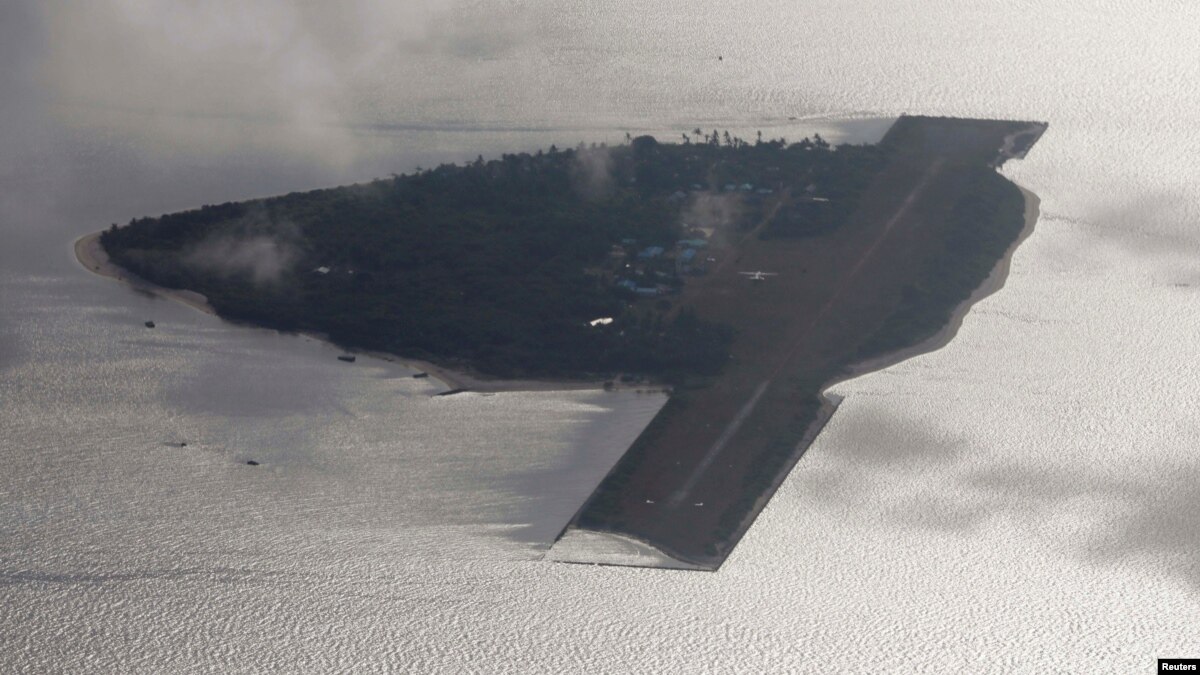
A beaching ramp due for completion this year – and warily watched by China – will give curious reporters something new to see when the Philippine military next escorts them to Thitu Island. Media pay attention to the 37-hectare (90 acres) islet west of the main Philippine archipelago because it’s the front line in a sovereignty dispute over the wider, largely off-limits South China Sea.
China also claims Thitu, and it’s developing three other islets not far off.
Thitu, home to about 100 people plus an airstrip, is one South China Sea islet that allows some form of public access. Governments that control the sea’s islets seldom permit anyone but their own personnel to visit, but some believe wider access can their bolster sovereignty claims by showing actual use, a criterion cited in international legal disputes.
Among officials in China, which is starting to allow cruises, “they see tourism as a means of exercise of administrative control,” said Yun Sun, East Asia Program senior associate with the Stimson Center think tank in Washington, D.C. “By governing or managing the tourism in that area, it will be a piece of evidence to support sovereignty.”
Most of the sea’s roughly 500 islets lack infrastructure. Coast guards and navy personnel stop entry to others. But a Malaysian-held island allows diving. Taiwan organizes periodic public viewing on two of its islets, China is opening the Paracel chain to cruise ships and Vietnam runs tours for its own citizens to the Spratly chain, which includes Thitu.
What’s open
Brunei, China, Malaysia, the Philippines, Taiwan and Vietnam dispute sovereignty over all or parts of the 3.5-million-square-kilometer sea. The waterway running from Hong Kong to the island of Borneo is valued for fisheries, shipping lanes and undersea fossil fuel reserves.
Reporters can visit Taiwan-held Itu Aba on sporadically organized trips, the most recent of which took place in 2016. Marine ecosystem researchers join occasional trips, by invitation, to Taiwanese-controlled Pratas Islands. Taiwan’s science minister led a 64-person delegation including researchers, some non-Taiwanese, to the Pratas in August.
Passengers on the Chinese cruise ship are probably all Chinese nationals, said Jonathan Spangler, director of the South China Sea Think Tank in Taipei.
It’s hard for foreigners to book, said Collin Koh, a maritime security research fellow at Nanyang Technological University in Singapore.
“So far, China is still restricted because of the sensitivity of the area. Vietnam is comparable to China in terms of the level of access,” Koh said. “Unless you are a Chinese citizen I think it is very difficult to access those areas.”
One island totally open
Layang Layang, a Malaysian naval base, stands out as the sea’s only islet open to the general public, regardless of nationality and without joining a media tour or research delegation. Visitors board charter flights from Borneo for the 300-kilometer trips and stay at the island’s 85-room diving resort for expeditions in the nearby open sea.
Malaysia began opening Layang Layang in the 1980s’s before other countries had the knowledge or impetus to protest, Koh said.
“In terms of a place that you could actually go for a vacation I think the only one that’s really open to like the global public is Layang Layang,” Spangler said.
Waters in the sea also remain open to the public, allowing civilian vessels to transit – usually without incident. About one-third of the world’s marine shipping traffic pass through the South China Sea today.
More access?
China, with the region’s strongest armed forces, has taken a territorial lead in the six-way sovereignty dispute over the past decade by reclaiming land to enlarge islands for military installations. Other countries resent the expansion, leading to standoffs, negotiations and warnings to Beijing from the United States.
A sudden opening of a new feature to the public would disrupt an uneasy calm today among the maritime claimants, Spangler said.
But he said China might eventually open its Paracel cruises further to foreigners. Malaysia or the Philippines could extend today’s level of public access to “make it seem like less of a sensitive thing,” he added.
The Permanent Court of International Justice considers a continual display of authority over a land feature as an effective administrative use of the South China Sea.
The Philippines would worry about safety before opening further, Koh said. Some 90 Chinese ships ranging from 30 to 70 meters in length alarmed Manila when they approached Thitu Island in December and January to check the beaching ramp, according to the Asia Maritime Transparency Initiative under the U.S. research group Center for Strategic & International Studies.
China and the Association of Southeast Asian Nations, which includes four maritime claimants, are negotiating now a code of conduct aimed at preventing mishaps in the sea.
Read More How the Public Can Visit the Disputed, Undeveloped South China Sea : https://ift.tt/2WHfxGV
No comments:
Post a Comment